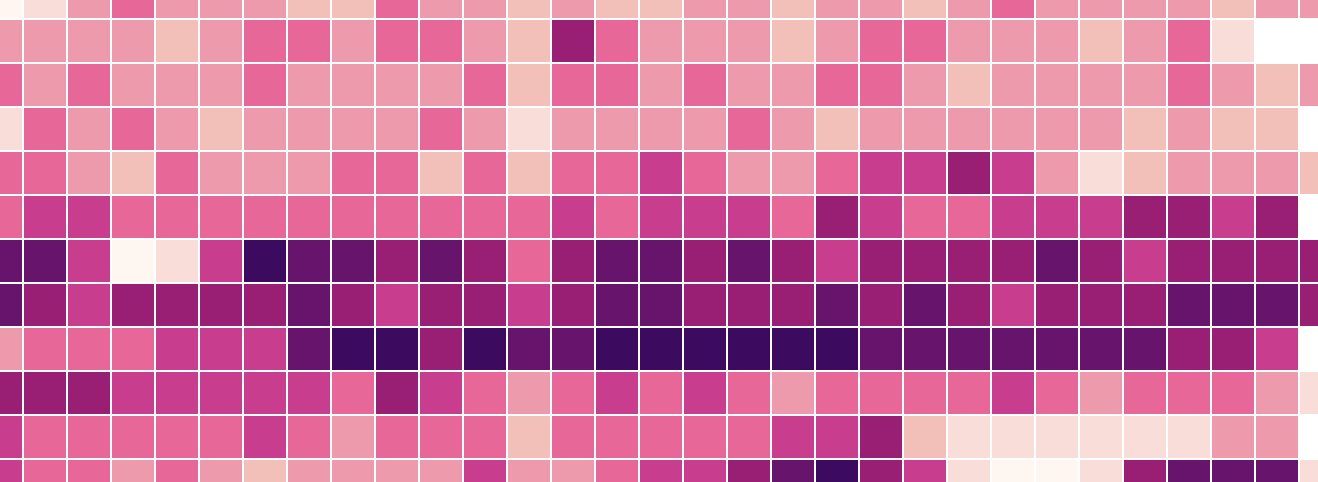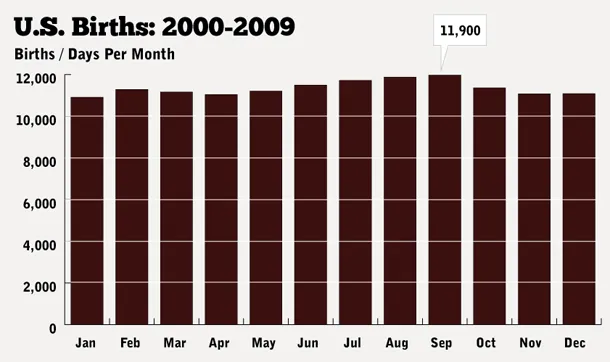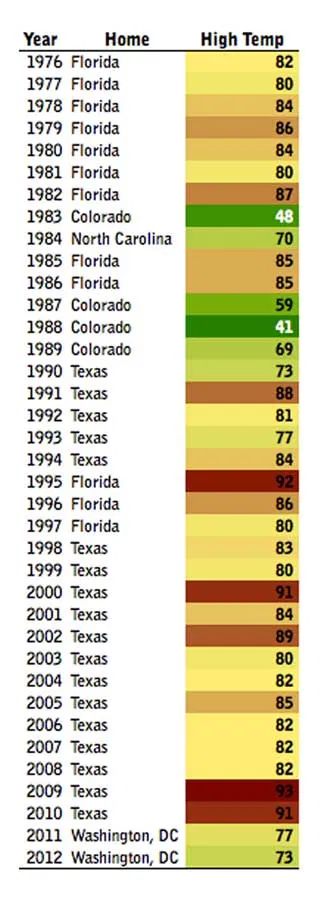Posts tagged "birthday"

How Common is Your Birthday? This Visualization Might Surprise You
It's baby season in America, with September the busiest month for births on average in the last two decades. So it seemed like the right time to remix this blog's...
Read more →

Birthday Heatmap Born Again
Last year on my birthday I created a quick heatmap visualizing birthdays by their rank on the calendar. Despite its flaws, the graphic went viral by The Daily Viz standards,...
Read more →

How Common Is Your Birthday? Pt. 2.
Last weekend's birthday heatmap post has been hugely popular by The Daily Viz standards, drawing in more than 100,000 readers and tons of social media attention. While I'm excited about...
Read more →

A Below-Average Birthday
Today's my birthday, and the weather is great. What's it been like for past birthdays, I wondered. The answer: All over the place (sort of like my parents' moving choices)....
Read more →